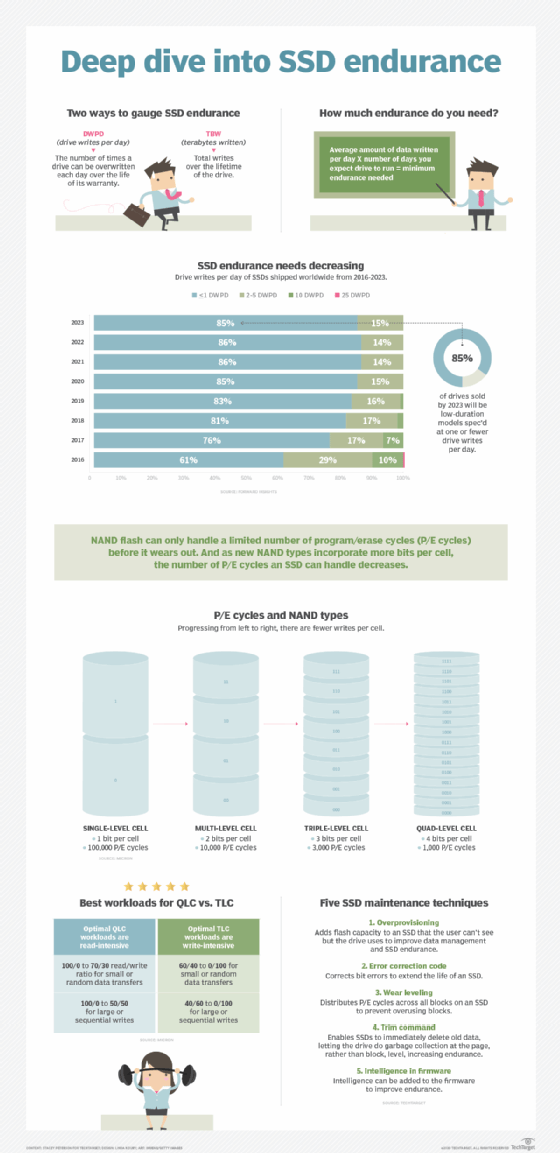How SSD endurance affects flash memory use
SSD durability is a key factor in the lifespan of storage devices. Learn how it's measured, how it's evolving, what the best endurance levels are for different workloads and more.

SSD endurance is limited. Drives wear out because during write operations, all the bits in a NAND flash block must be erased before new data can be written. Repeated program/erase cycles eventually break down the oxide layer within the floating-gate transistors that make up NAND flash. As the oxide layer degrades, a drive's bit-error rate increases and, eventually, the flash cell becomes problematic.
Enterprise-grade SSDs are designed to last three to five years. SSD endurance varies by the type of NAND flash used. The more bits per cell in the flash, the fewer program/erase cycles it can tolerate. As a result, quad-level cell (QLC) NAND with four bits per cell is generally used for read-intensive applications, and NAND types with fewer bits are used for write-intensive workloads.
With QLC NAND, vendors are paying more attention to specific workloads' wear characteristics. For instance, Micron provides workload-specific specs for its 5210 ION SSD based on write I/O.
Check our infographic for more on how SSD endurance affects flash memory use.